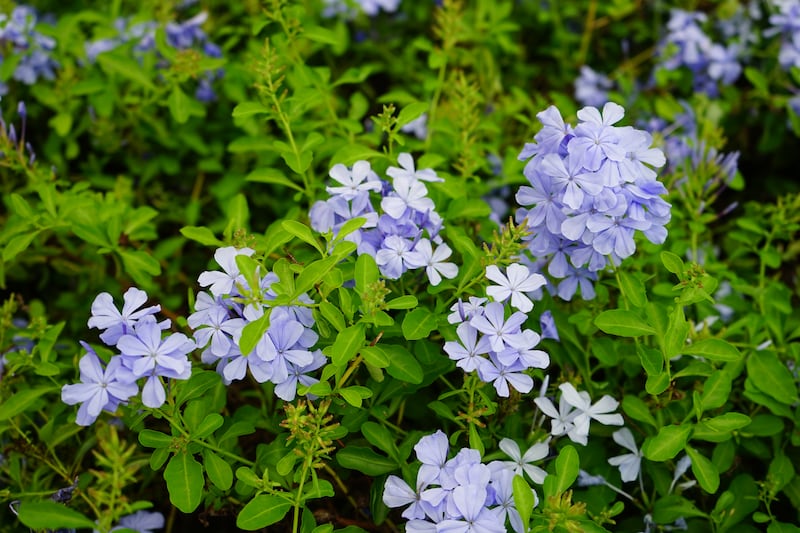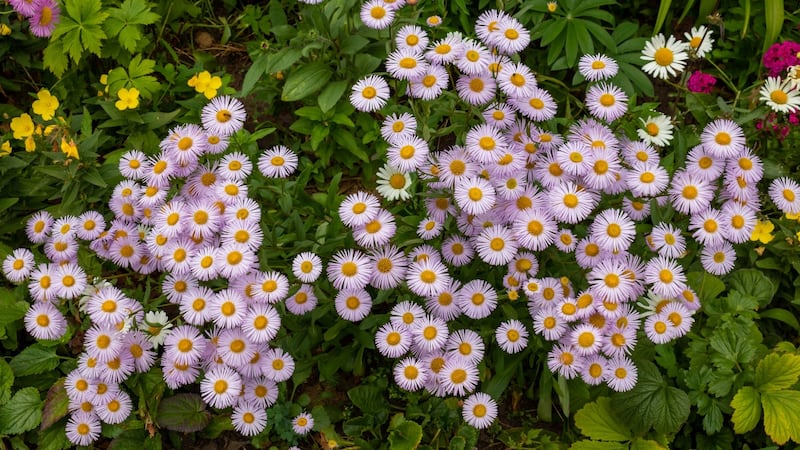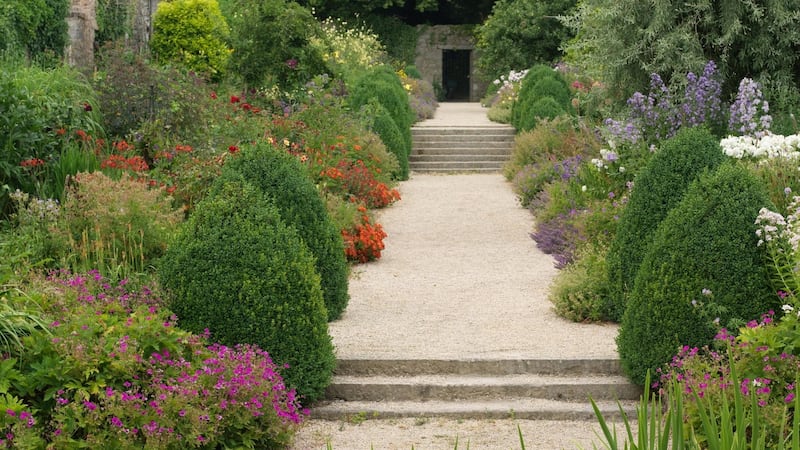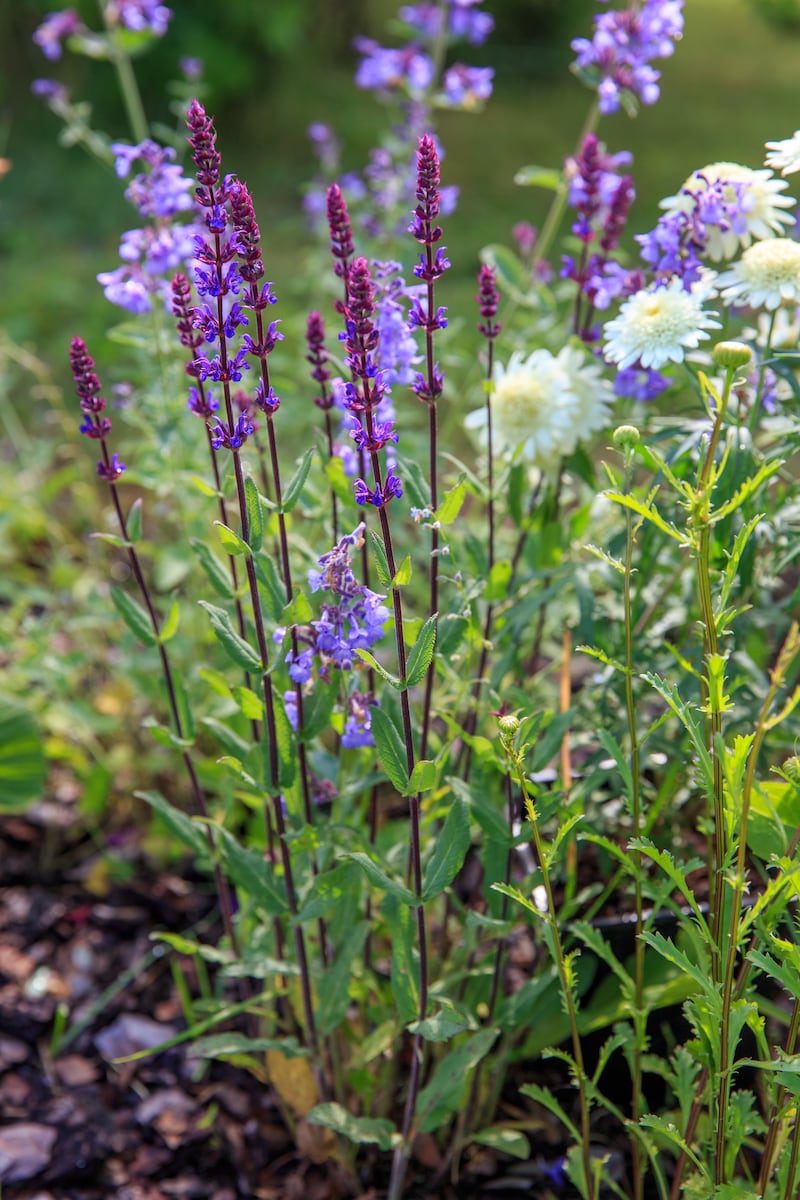Plants that cope with conditions from deep, dry shade to exposed, windy corners are a must in most gardens.
Here, 10 of Ireland’s leading horticulturists, gardeners and garden designers single out their all-time favourite for those oh-so-tricky areas of the garden. Here’s what they had to say.

Liat & Oliver Schurmann, garden designers and co-founders of Mount Venus Nursery in the foothills of the Dublin mountains: “For both of us it would have to be Ceratostigma plumbaginoides [plumbago], a very hardy, easy-to-grow plant that we first saw many years ago growing at an altitude of 1,000 metres in between rocky outcrops near Lhasa, the capital of Tibet in the Himalayas. A low-growing, mat-forming herbaceous perennial that dies back in late autumn, it’s slow to appear in spring so needs a gardener with the patience to wait for it to show itself. But when it does, it’s a beauty with lovely gentian-blue flowers from September-November and rich autumn leaf colour. Grow it through the gaps in a dry-stone wall, along the edge of paving or around the base of deciduous shrubs. In Ireland’s cool, damp climate, it needs a sunny spot to flower well.” (mountvenusnursery.com)
Paul Martin, the Dundalk-based Chelsea gold medal-winning garden designer: “I love to use the herbaceous ornamental grass known as Hakonechloa macra, or Japanese forest grass, which is supremely tough, hardy and easy to grow once established. It adds lightness and movement to any planting scheme, provides fantastic autumnal colour and never grows too big or unwieldy but slowly forms these sculptural hummocks. Although it’s happiest in a cool, damp soil, it tolerates dry shade and looks great used in generous drifts and/or in combination with other Japanese style plants such as acers and bamboos.” (paulmartindesigns.com)
READ MORE

Tig Mays, co-founder with his wife, Anthea Howbert, of the Howbert & Mays chain of Dublin garden centres: “It’s got to be Erigeron karvinskianus, or Mexican fleabane, the low-growing, sun-loving, drought-tolerant perennial that just can’t be beaten for its versatility, obliging growth habit and long flowering period. It politely and decoratively self-seeds itself into paving cracks and crevices in stone walls without ever causing damage, forming these low, dainty mounds of evergreen, drought-tolerant foliage from which a haze of pretty, pollinator-friendly daisy-like flowers appear for months on end. It also makes a really great container plant that forgives being watered irregularly.” (howbertandmays.ie)

Robert Miller, owner and founder of Altamont Plants, the specialist nursery and garden centre in the walled garden of Altamont House near Tullow, Co Carlow: “One of my all-time favourites has to be heavenly bamboo, or Nandina domestica, which I think offers such an amazingly long season of interest. It’s a slow-growing, bushy, evergreen shrub. We grow the straightforward species here at Altamont and I don’t think I’ve ever seen it without its panicles of pretty white flowers or scarlet berries, sometimes even with both at the same time. Its colourful foliage, which takes on tints of russet-red-purple in winter and when it first emerges, is another great plus. If I could name another must-have plant it would be Epimedium ‘Pink Champagne’, a fantastic hybrid variety of barrenwort with delicate sprays of pale pink flowers in spring that appear above neat mounds of evergreen foliage. A plant that’s happy in the dappled, dry shade of deciduous trees or shrubs, here at Altamont it grows very well beneath the canopy of beech trees in what’s known as the Nun’s Walk.” (altamontplants.com)
Hester Forde, the Cork-based nursery owner, lecturer, garden writer and creator of Coosheen Garden: “I wouldn’t be without the little clump-forming, evergreen fern known as Polypodium cambricum ‘Richard Kayse’. Very tough, slow-spreading and easy to grow even in dryish soils, in springtime its elegant leaves provide the perfect foil for early-emerging flowering bulbs such as snowdrops as well as acting like a natural scaffold to help support their dainty stems. Then it dies back down to ground level in summer before re-emerging in early autumn to perform the very same role for autumn-flowering bulbs such as colchicums and nerines.” (hesterfordegarden.com)

Adam Whitbourn, head gardener of Blarney Castle in Co Cork: “For me, Nepeta ‘Six Hills Giant’ ticks all the boxes ... a herbaceous perennial, this classic variety of catmint is an ultra-reliable, all-round performer that grows well and looks good almost anywhere ... in sun or light shade, in moist or dry soils, in a gravel garden or a traditional mixed border. A brilliant, fast-growing gap filler, it’s also very hardy, handles being roughly treated — even being occasionally trodden on — and repeat-flowers to give a really long season of interest throughout the summer. Like lavender, but much better suited to Ireland’s damp, cool climate, its scented, pollinator-friendly purple-blue flowers and clumps of aromatic, grey-green foliage provide a brilliant foil for showier plants.” (blarneycastle.ie)
Susan Harford, co-founder and owner with her husband Gerry of Camolin Potting Shed, the Wexford-based specialist nursery: “One of our favourites is Salvia uliginosa or Bog sage as it’s commonly known, a very tall, stately, autumn-flowering perennial that’s a great choice for a damp border or bog garden. Very elegant in its growth habit, its graceful spires of sky-blue, bee and butterfly-friendly flowers appear from early September until the first harsh frosts and combine beautifully with other tall, late flowering perennials such as Eupatorium maculatum ‘Riesenschirm’. It likes a moisture-retentive or even damp soil in a sunny spot but will tolerate periods of drought once its roots have established themselves deeply in the ground.” (camolinpottingshed.com)
Colm O’Driscoll, head gardener at Airfield Gardens, Co Dublin (soon to be head gardener at Lismore Castle, Co Waterford): “I’m always on the hunt for plants that will cope with the hot, dry, windy growing conditions that are a challenging feature of the gardens here at Airfield. One of the very best is Peruvian feathergrass, or Stipa ichu, which is like Stipa ‘Ponytails’ but on steroids; a lot taller and more imposing with larger, fuller, creamy inflorescences. It does brilliantly in full sun and a very free-draining, light, not overly fertile soil that stops it getting too soft and lush. Two others that have sailed through this year’s hot, dry summer unscathed are the drought-tolerant shrubby perennial known as the sunset foxglove (Digitalis obscura ‘Dusky Rose’) and the drought-tolerant, sun-loving perennial known as sea lavender (Limonium latifolium).” (airfield.ie)
Valerie Keating Bond, the Cork-based garden designer who recently collaborated with landscape designers Adam Hunt and Lulu Urquhart on the design and construction of the best-in-show garden at this year’s RHS Chelsea Flower Show: “For a cool, damp spot in dappled shade, I love to use Rodgersia podophylla for its large, handsome, architectural foliage and its very pretty pale summer flowers as well as the fantastic autumn colour it provides as the foliage begins to turn to shades of rusty bronze before dying back over winter. In my own city garden, it grows beneath the shady canopy of a mimosa tree and in combination with other tough woodlanders including epimediums, Euphorbia robbiae and the evergreen ornamental grass, Anemanthele lessoniana, always a winning mix.” @valstarbond
Seamus O’Brien, planthunter, author and head gardener of the National Botanic Gardens Kilmacurragh in Co Wicklow: “One of my go-to plants is Trachystemon orientalis (or Abraham-Isaac-Jacob as it’s sometimes known), one of the very best ground-cover plants for dense, dry shade. A member of the borage family, its pretty blue flowers appear in spring just as the large green leaves are beginning to emerge. Very hardy, fast-spreading and vigorous, it’s a great weed-suppressing plant to grow beneath the canopy of large, established deciduous trees and shrubs while it also looks great in a subtropical-style border as used by the garden designer Catherine FitzGerald at Glin Castle. The green-leaved species aside, there’s an exquisite golden-leafed form, Trachystemon ‘Kiwi Sun’, that I’ve been hankering after ever since I first saw it growing in the gardens of the American plantsman, author and nursery owner Dan Hinkley.” (botanicgardens.ie)
This Week in the Garden
Continue to home-save seed of many different kinds of annuals, biennials, perennials, shrubs and trees, choosing a dry, still day to do it. Place the freshly harvested in a clearly labelled brown paper bag or on an open seed tray in a cool, dry place for a few weeks to let it properly dry out and then store it in labelled paper envelopes in a cool, dry, rodent-proof place until you want to sow it.
Any potato crops left in the ground should be lifted, left to dry out in the open for no more than a couple of hours and then stored in a cool, dry, dark, frost-free place in the coming weeks to prevent them from being damaged by underground slugs or rotting in wet ground conditions. If your garden is prone to winter waterlogging, then it’s also best to lift and store beetroot and carrots for the same reason.
Dates for your Diary
Continuing until October 7th, at the National Botanic Gardens, Glasnevin, Dublin 9, the 36th annual Sculpture in Context exhibition which brings together the work of more than 120 artists using a wide range of media. See botanicgardens.ie
October 12th (7.30pm-9pm), How Gardening Contributes to the Science and Practice of Wellness, a Zoom talk by the author and gardener Fiann Ó Nualláin, aka the Holistic Gardener, on behalf of the Royal Horticultural Society of Ireland. See: rhsi.ie:















